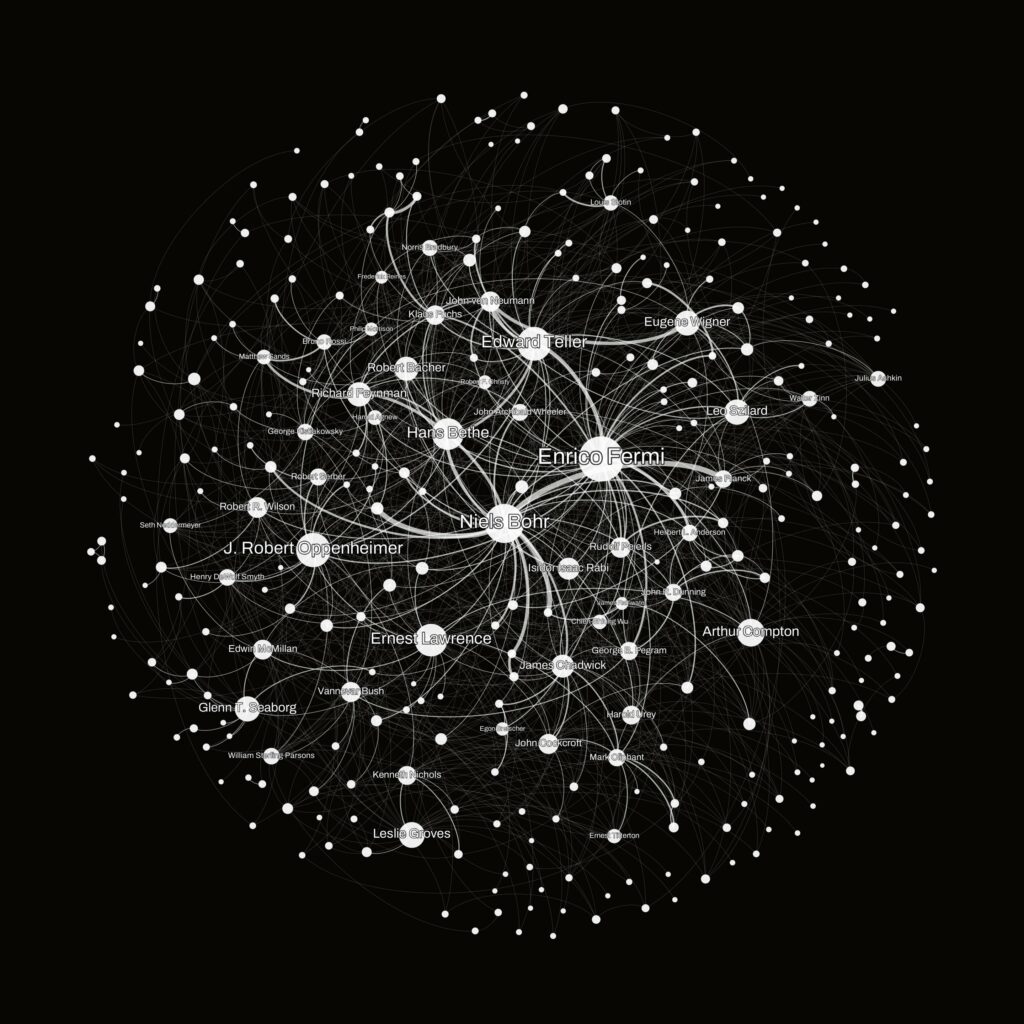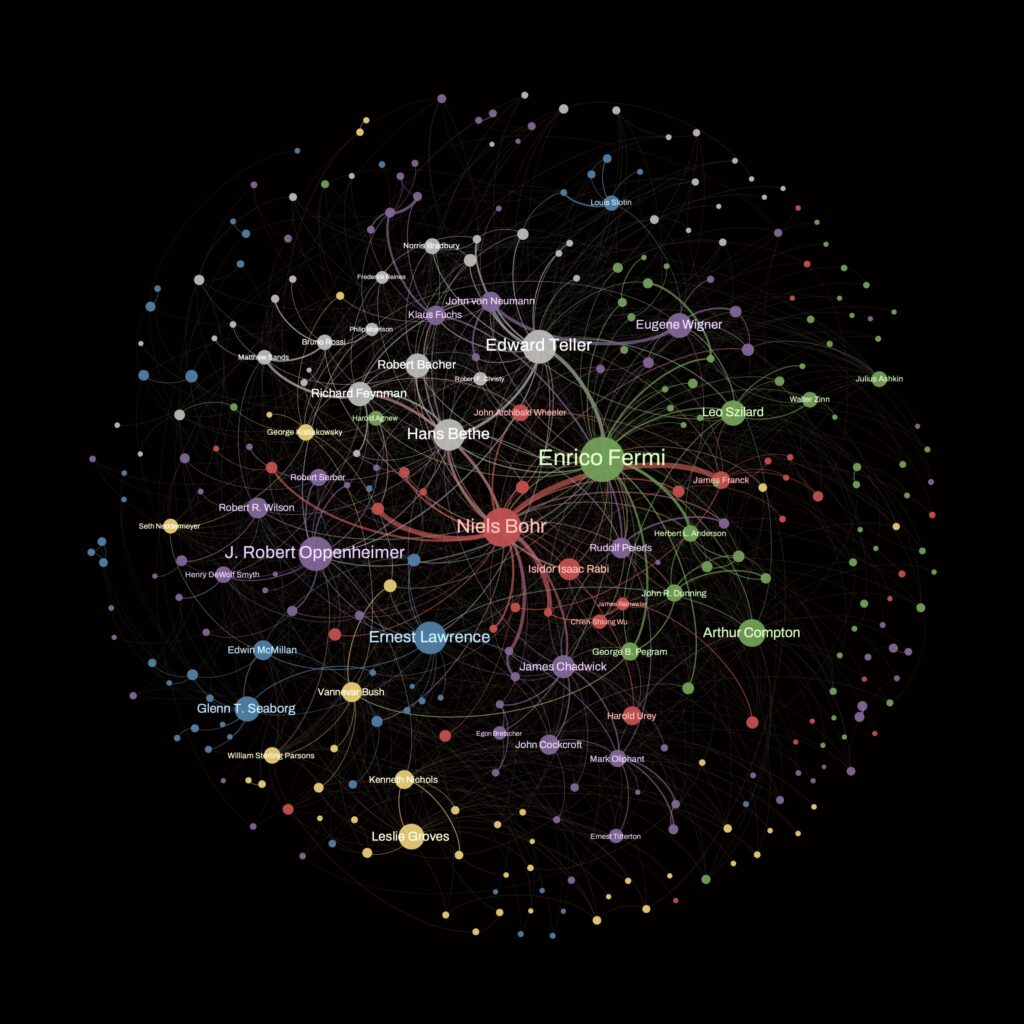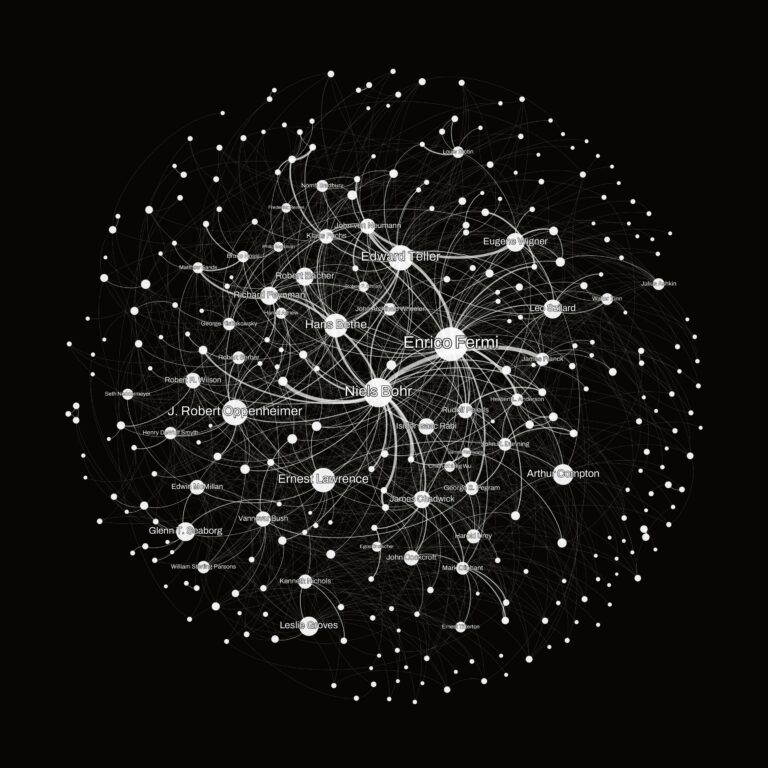Charting the Connections Among Manhattan Project Scientists Through Network Science
The Manhattan Project, a classified initiative that culminated in the creation of the first atomic bombs during World War II, engaged numerous talented and respected scientists, among them physicist J. Robert Oppenheimer.
Milán Janosov, the Founder of Geospatial Data Consulting and Chief Data Scientist at Baoba, recently embarked on an endeavor to chart the relationships among scientists involved in the Manhattan Project, employing methodologies grounded in network science.
Network or data science is a research field that delves into the intricate connections between individuals within a group or among components of networked systems. This research has been published on the arXiv preprint server.

“I’ve been engaged in the exploration of social networks and mapping unconventional datasets to unveil concealed connections for an extended period,” remarked Janosov. “
In the course of this exploration, I’ve previously charted hidden networks of scientists, including the network of Nobel laureates in a project unveiled earlier this year. With a history of mapping scientists’ networks, after viewing the much-anticipated Oppenheimer movie, I decided to delve into untangling the collaboration and social connections that underpinned the Manhattan Project—a monumental and influential scientific collaboration in human history.
” The release of the widely acclaimed Oppenheimer movie in July of this year reignited substantial public interest in the Manhattan Project and the extensive research endeavors that led to the creation of the atomic bomb. This resurgence of interest inspired Janosov, a trained network scientist with a physics background, to further investigate this subject in his research.
“A conventional and commonly employed method for constructing networks of scientists involves shared publications,” clarified Janosov. “Nevertheless, due to the ongoing classification of certain scientific aspects of the Manhattan Project, following that approach would have skewed the representation. Hence, I opted to veer away from classified and private data, shifting towards the most accessible public information platform—Wikipedia.”

To chart the connections among various scientists involved in the Manhattan Project, Janosov initially gathered information from the Wikipedia pages of every Nobel laureate, compiling these pages into a dataset. Subsequently, he applied language processing techniques to analyze the textual content within these pages. “
This method enabled me to quantify the frequency with which each laureate’s page references others,” explained Janosov. “This information was sufficient to construct their network, wherein each scientist served as a node connected based on mentions and references found on Wikipedia. For example, Oppenheimer’s Wiki page makes over 10 references to Enrico Fermi, establishing a strong link between the two physicists.” The map crafted by Janosov depicts renowned scientists from the Manhattan Project as dots, with lines connecting these dots to represent the connections between scientists. This intricate web of relationships highlights research circles that collaborated closely during that era. “
It’s fascinating to observe how the network’s community structure delineates different departments and historically recognized cliques within the projects, such as the Theoretical Division with Feynman or World War II refugees around Bohr,” noted Janosov. “However, my favorite aspect pertains to the Hungarian immigrants known as the ‘Martians’: Teller, Wigner, Szilard, and Neuman, who played a foundational role in the early stages of atomic research. Interestingly, even in this network, their strong interconnectedness is distinctly visible with the right coloring.”

Janosov’s vibrant visualization of The Manhattan Project serves as a recent illustration of the immense value that network science holds in crafting depictions of human connections and intricate maps of complex systems featuring numerous interacting elements. Future investigations in this swiftly advancing field of research have the potential to unveil fresh insights across a diverse range of subjects spanning both the realms of science and the humanities.
“At present, my primary focus revolves around inquiries linked to urban planning, geospatial data science, and sustainability,” noted Janosov. “I am presently delving into a critical question within this domain, where network science proves to be an apt and beneficial application.”
This article is republished from PhysORG under a Creative Commons license. Read the original article.
Do not forget to share your opinion with us to provide you with the best posts !




0 Comments